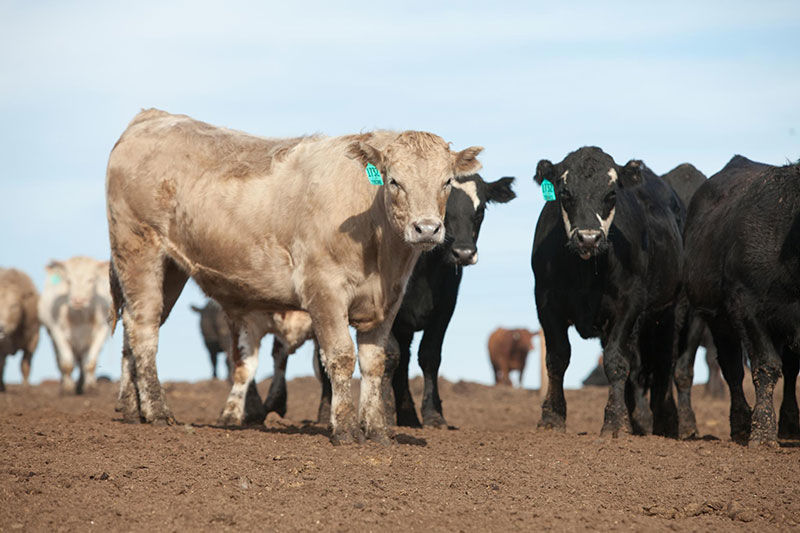A new divisional patent issued to researchers at Kansas State University’s College of Veterinary Medicine could help lead cattle producers to a path of least resistance by providing a nonantibiotic treatment option for beef cattle liver infections.
The latest work by the university’s T.G. Nagaraja and M.M. Chengappa, and former College of Veterinary Medicine researchers Sanjeev Narayanan and Amit Kumar, “Composition and Methods for Detecting, Treating and Protecting Against Fusobacterium Infection,” uses vaccine-based technology that circumvents antibiotic use and the potential public health concerns associated with antibiotic resistance when treating cattle and sheep for liver abscesses caused by Fusobacterium. The liver infections are a significant economic concern to the feedlot industry.
The researchers’ work improves a previous patent they earned for their novel approach to preventing fusobacterial infections, said Nagaraja, university distinguished professor of microbiology in the diagnostic medicine and pathobiology department of the College of Veterinary Medicine.
“We have identified a protein and learned the mechanisms of how the protein attaches to cells, so we created compositions and methods to use the protein to prevent the attachment of Fusobacterium to the cells in the rumen — the first compartment of a cow stomach—and liver,” Nagaraja said. “If bacteria do not attach to cells, they are highly unlikely to cause infection.”
Chengappa, also a university distinguished professor of microbiology in the diagnostic medicine and pathobiology department, said the original patent covers the use of the researchers’ invention within expression systems, adjuvants, injectable solutions, oral compounds and vaccines.
“The new patent broadens the scope of how the invention can be utilized,” Chengappa said.
A recent study by West Texas A&M University for a major animal health company found that liver abscesses cost the beef industry $56 million annually. Options for treating cattle with such infections and other diseases have been affected by new regulations regarding antibiotic use in livestock, called the Veterinary Feed Directive, enacted by the Food and Drug Administration in January 2017.
“Alternative methods to antibiotics for prevention, control and treatment of disease in animals are of great value as we move into a time of increased focus on antibiotic stewardship,” said Mike Apley, Frick professor of clinical sciences at Kansas State University. “This focus is apparent in regulatory, legislative and consumer attention given to antibiotic use in food animals. Effective vaccines for common diseases are especially valuable in our prevention and control protocols.”
While the timing of the newly patented methods is convenient for producers, the research evolved over a much longer period of time.
“Understanding the pathogenesis and factors contributing to the liver abscessation in feedlot cattle was a novel scientific field discovery 30 years ago,” said Kelly Lechtenberg, a former doctoral student under Nagaraja. Lechtenberg earned his Doctor of Veterinary Medicine in 1987 and a doctorate in 1988, both from Kansas State University. He currently leads Midwest Veterinary Services in Oakland, Nebraska, and the Veterinary and Biomedical Research Center in Manhattan.
“The work of Drs. Nagaraja and Chengappa is instrumental in understanding the liver abscess disease process, identifying optimal points of intervention and providing the insight necessary to develop effective vaccines,” Lechtenberg said.
The new Fusobacterium patent is effective for 20 years and is administered through the Kansas State University Research Foundation.


